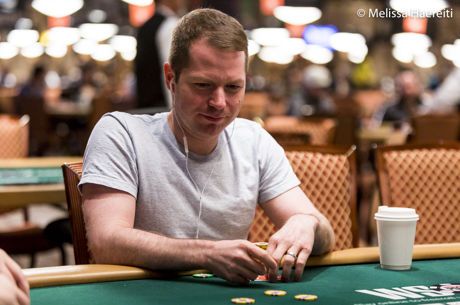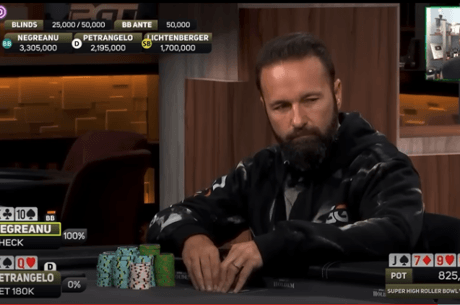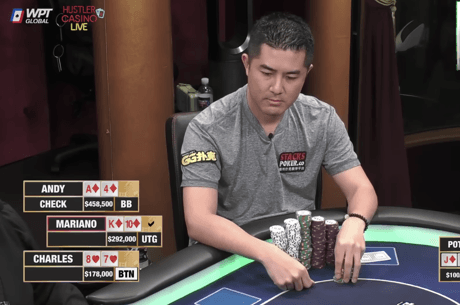Jonathan Little Explains When It��s a Good Time to Fold Good Draws

Sometimes, even when you have a good draw, you have to make a tight fold. I know from experience, including one spot in the 2019 World Series of Poker Main Event where I folded a draw in a tough spot.
The hand took place in the 2,000/4,000/4,000 level when I was sitting with 88K (22 BBs) and the 10?9? in the big blind. The player in the lojack raised to 8,000 and the player on the button called. Right off the bat, we had to face a decision after a raise and call �C should we go all in or call?
I actually think jamming all in is the best play if I think I have any sort of fold equity. That said, both these players were tight-aggressive, so chances are they have stronger hands and would be more inclined to call a shove. As such, I am more inclined to just call the raise and see a flop.
Had they folded, I would��ve check-raised all in, but the problem became if either player had a king, they��d never fold to my raise.
That��s what I did and the flop fell K?7?2?, giving me a flush draw. I am not going to have a leading range in this spot ever, so I checked and the original raiser continued for 9,000. The button called and I didn��t like to see that. Had they folded, I would��ve check-raised all in, but the problem became if either player had a king, they��d never fold to my raise. Facing a bet and a call, it seemed likely I was up against a king.
The button player here should only continue with either a good draw, such as a flush draw better than mine or made hands like a pair of sevens or better. Given he��s a TAG player, he shouldn��t have a lot of sevens in his range, while a king is much more likely.
Facing the bet and call, I think we should call instead of jamming, which is what I do. The turn was the A? and two checks saw the player on the button bet 25,000. Would the button randomly be betting here with a weak hand? I think the answer is definitely not.
With 71,000 in my stack, I don��t really have a lot of fold equity if I go all in as he��d only have to call 46K more. As such, I needed to either call or fold. It was basically a breakeven proposition for me to call �C I have an 18% chance of making my flush and need to win 19-20% of the time to make it worthwhile �C but what about implied odds?
If I make the flush and jam, my opponent could very well fold. Or, if they did call, they could easily have a hand like A?Xx or Q?X? for a better flush. It played out in a manner that those hands are very possible. It��s also possible the lojack could be trapping with a set. I doubt it, but it��s possible.
It all added up to this was a hand that I think I had to have the immense discipline to fold, which I did. The lojack folded too and we never got to see what the button had, unfortunately.
For a more thorough breakdown of this hand, check out my thoughts in the following video:
Jonathan Little is a professional poker player and author with over $7,000,000 in live tournament earnings. He writes a weekly educational blog and hosts a podcast at JonathanLittlePoker.com. Sign up to learn poker from Jonathan for free at PokerCoaching.com. You can follow him on Twitter @JonathanLittle.









